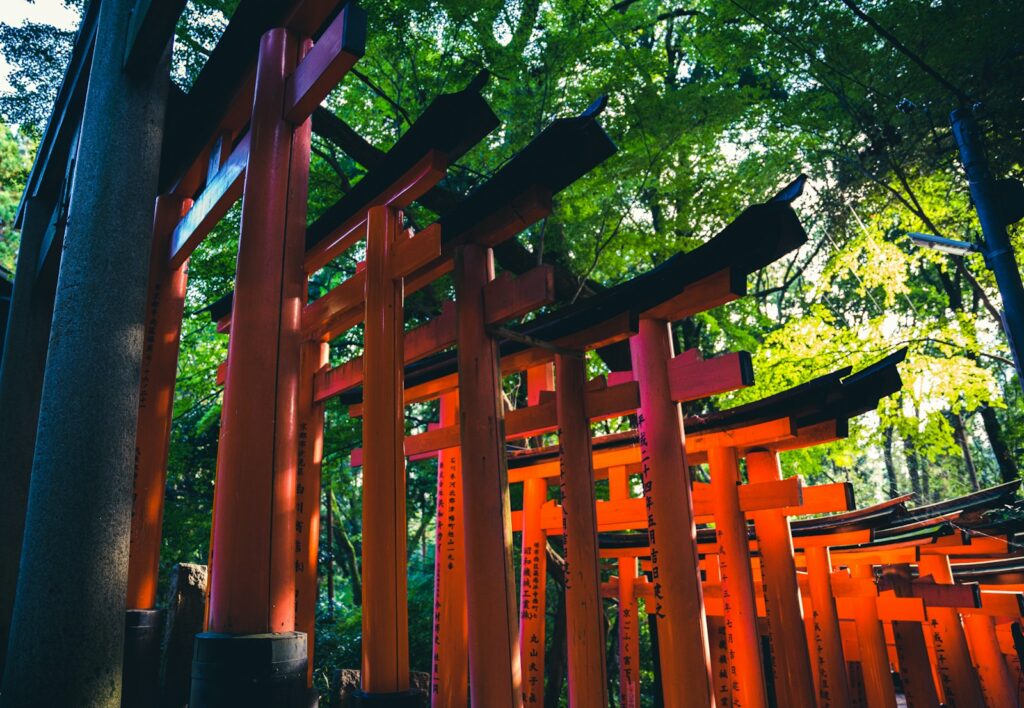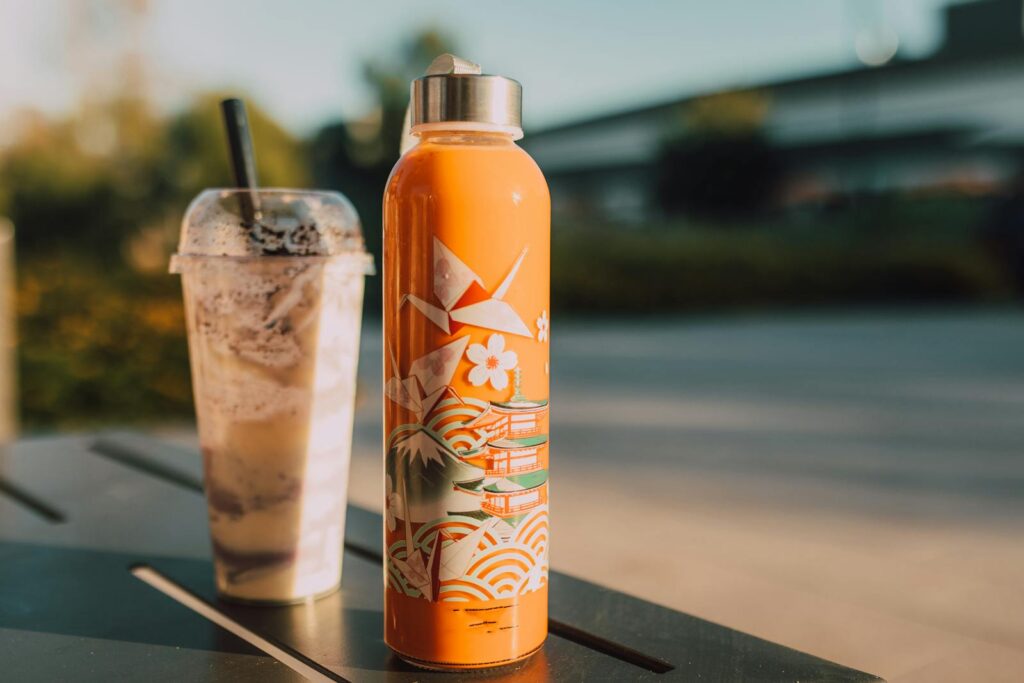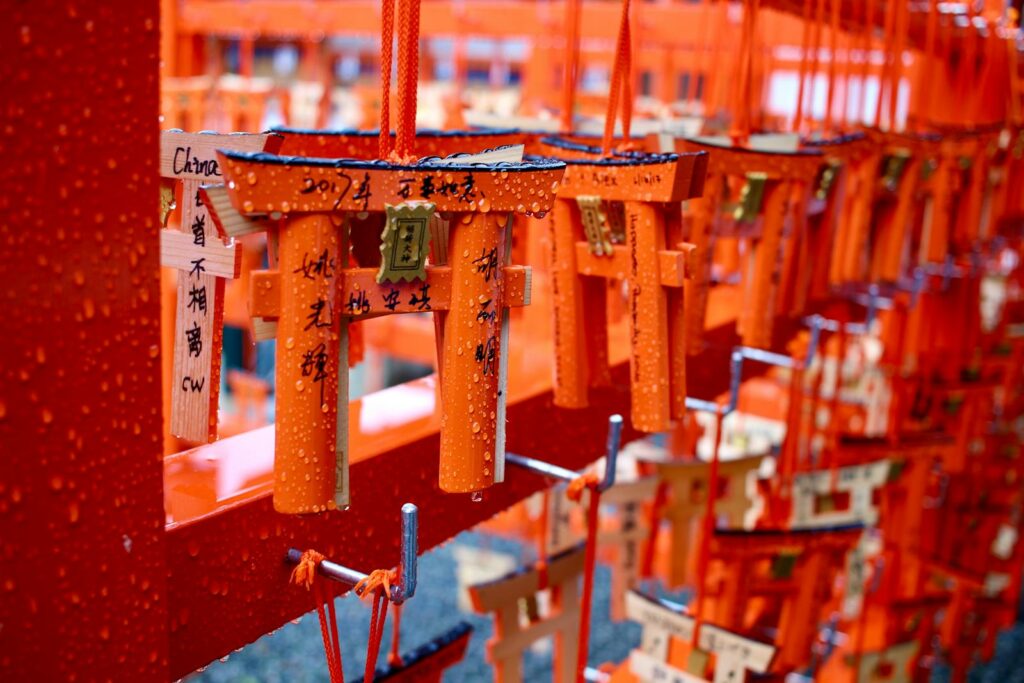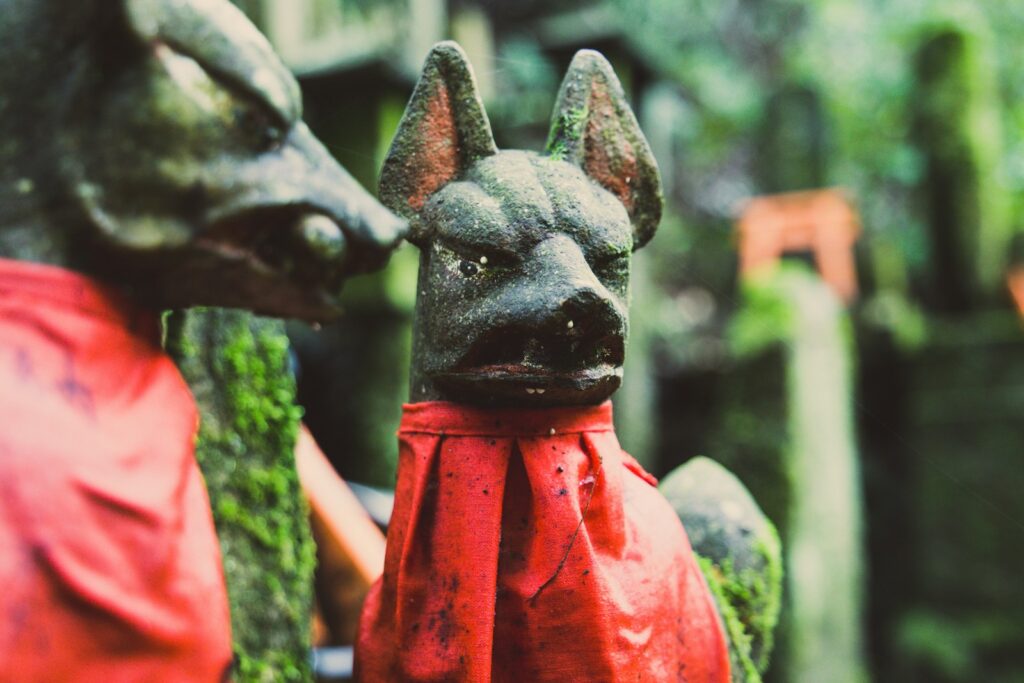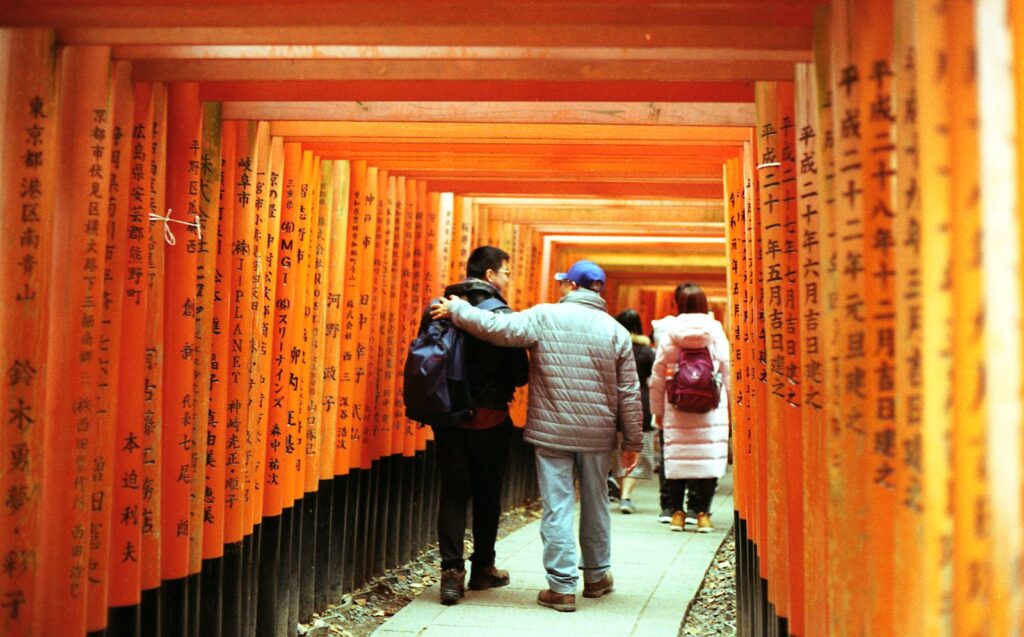Fushimi Inari Taisha, with its mesmerizing thousands of vermillion torii gates, is one of Japan’s most iconic sites. Nestled at the base of Mount Inari in Kyoto, it’s a must-visit for travelers seeking to immerse themselves in Japanese culture and spirituality. This Shinto shrine is dedicated to Inari, the god of rice, prosperity, and business, and is a place of deep cultural and spiritual significance. While it’s famous for its stunning visual appeal, there’s much more to Fushimi Inari than meets the eye. To truly appreciate your visit, it’s essential to understand the context and meaning behind what you’ll see.
In this blog post, we’ll delve into ten crucial pieces of information that will enhance your experience at Fushimi Inari. From the best times to visit to the significance of the fox statues, these insights will help you navigate the site with respect and appreciation. Whether you’re planning a leisurely stroll through the lower torii gates or an ambitious hike to the summit of Mount Inari, these tips will ensure you get the most out of your visit. Let’s dive in and uncover the deeper layers of Fushimi Inari Taisha.
1. Understanding the Significance of Fushimi Inari
Fushimi Inari Taisha is the head shrine of Inari, the Shinto god of rice, prosperity, and business. This deity has been venerated since ancient times, with the shrine’s origins dating back to 711 AD. The god Inari is believed to ensure good harvests and prosperity, making this shrine particularly important for merchants and tradespeople. The thousands of torii gates you’ll walk through are donated by individuals and businesses to express their gratitude for the prosperity and good fortune they’ve received.
Each gate is inscribed with the name of its donor and the date of the donation. This tradition of offering torii gates began in the Edo period and continues today, with new gates being added regularly. As you walk through these gates, you’re not just witnessing a beautiful sight but also engaging with a living history of faith and gratitude. Understanding this context adds a layer of depth to your visit, transforming it from a mere sightseeing trip into a meaningful cultural experience.
2. Best Time to Visit
Fushimi Inari is a popular destination, attracting millions of visitors each year. To avoid the crowds and experience the shrine in a more serene atmosphere, it’s best to visit early in the morning or late in the afternoon. Arriving at sunrise offers a tranquil experience, with the soft morning light casting a gentle glow on the torii gates. This is also a time when the air is cool, and the paths are less crowded, allowing you to explore the site at your own pace.
Late afternoon visits, just before sunset, also provide a unique charm. As the sun descends, the light filtering through the torii gates creates a warm and mystical ambiance. This time of day is less crowded compared to the midday rush, giving you a more peaceful experience. Additionally, the view from the Yotsutsuji Intersection, with Kyoto bathed in the golden light of the setting sun, is breathtaking. Planning your visit during these times not only enhances your experience but also allows for better photography opportunities.
3. Navigating the Trails
The main attraction at Fushimi Inari is the Senbon Torii, or the “thousands of torii gates,” which starts right behind the main shrine. The trail through these gates leads up to the summit of Mount Inari, standing at 233 meters above sea level. The entire hike, including the return trip, can take about 2-3 hours, depending on your pace and how often you stop to take in the views or visit the smaller shrines along the way.
If you’re short on time or not up for the full hike, consider walking to the Yotsutsuji Intersection, which is roughly halfway up the mountain. This spot offers a panoramic view of Kyoto and is a popular turnaround point for many visitors. The trails are well-marked and well-maintained, but they do involve a lot of steps and some uneven paths. Taking your time to navigate these trails allows you to fully appreciate the natural beauty and spiritual atmosphere of the site.
4. Footwear Matters
The paths at Fushimi Inari involve a significant amount of walking, climbing, and navigating uneven terrain. This is not a place for fashionable footwear; practicality is key. Wearing comfortable and sturdy shoes will make your visit much more enjoyable. Athletic shoes or hiking boots are ideal, as they provide the necessary support and traction for the trails.
Inappropriate footwear, such as flip-flops or high heels, can not only make the hike uncomfortable but also potentially dangerous, as the paths can be slippery, especially after rain. Proper footwear allows you to focus on the beauty and serenity of the surroundings rather than worrying about your footing. Preparing with the right shoes ensures you can fully engage with the site and explore it without discomfort or injury.
5. Bring Water and Snacks
While Fushimi Inari is equipped with vending machines at various points along the trail, it’s wise to bring your own water and snacks. The hike, especially if you plan to reach the summit, can be quite exerting. Staying hydrated is crucial, and having a few light snacks can keep your energy levels up. This is particularly important during the warmer months when the heat can be intense.
There are a few small shops and tea houses along the lower parts of the trail where you can purchase refreshments, but these become less frequent as you ascend. Bringing your own provisions allows you to take breaks whenever you need, rather than being dependent on finding a vending machine or shop. This way, you can enjoy your hike at your own pace and take in the beauty of the surroundings without feeling rushed or unprepared.
6. Respect the Shrines and Offerings
Fushimi Inari is a place of worship, and it’s important to approach it with respect. The shrines, statues, and offerings you’ll see throughout the site are sacred to the Shinto faith. Avoid touching the offerings, and always follow any posted signs or instructions. When making an offering or saying a prayer, follow the Shinto customs: bow twice, clap twice, pray, and then bow once more.
This respectful behavior is not only a matter of etiquette but also enhances your own experience. By participating in these customs, even as a visitor, you gain a deeper connection to the spiritual significance of the place. Additionally, understanding and observing these practices helps preserve the sanctity of the site for others. Respect for the customs and traditions of Fushimi Inari ensures that it remains a place of reverence and tranquility.
7. Fox Statues and Their Symbolism
One of the unique features of Fushimi Inari is the numerous fox statues, known as kitsune, scattered throughout the shrine grounds. These foxes are considered messengers of Inari, and they play a crucial role in the Shinto religion. Often depicted holding keys in their mouths, the kitsune are believed to hold the key to the rice granary, symbolizing the protection of the harvest and the prosperity that comes with it.
The kitsune statues are often seen with other symbolic items, such as scrolls, representing wisdom, or jewels, symbolizing wealth. Recognizing these symbols can deepen your understanding of the site’s cultural and religious significance. The foxes are not just decorative elements but integral parts of the spiritual landscape of Fushimi Inari. Taking the time to observe and understand these statues can add a rich layer to your visit, making it more than just a visual experience but a cultural and spiritual journey.
8. Photography Etiquette
Fushimi Inari is an incredibly photogenic site, with its vibrant torii gates and scenic views. However, it’s important to practice good photography etiquette. Be mindful of other visitors and worshippers, and avoid blocking paths or disrupting the peaceful atmosphere to get the perfect shot. Early morning visits not only offer fewer crowds but also provide the best lighting for photography, with the soft morning light creating a beautiful effect.
Respecting the space and the people around you ensures that everyone can enjoy their visit. If you’re using a tripod or other equipment, be considerate of where you set up, and always prioritize the flow of foot traffic and the sanctity of the shrine areas. By being considerate, you contribute to the overall experience of Fushimi Inari as a place of beauty and tranquility.
9. Explore Beyond the Torii Gates
While the iconic torii gates are the main attraction, there are many smaller shrines and sacred spots along the trails that are worth exploring. These lesser-known areas often have fewer visitors and offer a peaceful retreat from the more crowded sections. For instance, the Omokaru Stones at the Okusha Hohaisho shrine are fascinating; the stones are believed to grant wishes if they feel lighter than expected when lifted.
Taking the time to explore these areas can provide a more comprehensive experience of Fushimi Inari. These smaller shrines each have their own unique charm and significance, and they allow you to experience the site in a more intimate and personal way. Venturing off the main path can lead to unexpected discoveries and a deeper appreciation for the richness of the site.
10. Nearby Attractions
Fushimi Inari is conveniently located near several other attractions that can complement your visit. Tofukuji Temple, known for its stunning autumn colors and Zen gardens, is a short walk away and offers a serene contrast to the vibrant energy of Fushimi Inari. The temple’s expansive grounds and beautiful bridges provide a peaceful setting for reflection.
Additionally, the Fushimi Sake District is nearby and offers a glimpse into traditional sake brewing. Many of the breweries offer tours and tastings, providing an excellent opportunity to learn about and sample Japan’s famous rice wine. Combining your visit to Fushimi Inari with these nearby attractions can make for a well-rounded and enriching day, allowing you to experience different facets of Kyoto’s cultural heritage.
Having a Perfect Visit to Fushimi Inari Taisha
A visit to Fushimi Inari Taisha is not just about seeing a famous landmark but about engaging with a deeply significant cultural and spiritual site. By understanding the history, customs, and symbolism associated with Fushimi Inari, you can transform your visit from a simple sightseeing trip into a meaningful exploration of Japanese culture. Each piece of information, from the best times to visit to the importance of the fox statues, adds depth to your experience.
No matter you’re a seasoned traveler or a first-time visitor, taking the time to learn about and respect the traditions of Fushimi Inari will enrich your journey. This shrine, with its thousands of torii gates and serene trails, offers a unique opportunity to connect with Japan’s spiritual heritage. Armed with these insights, you’re sure to have a memorable and fulfilling visit to one of Kyoto’s most iconic and beloved sites. Happy exploring!
For more useful tips and insights about traveling in Japan, be sure to check my other blog posts on the topic. For example, did you know that Japan is home to 25 UNESCO World Heritage Sites? I not only introduce each of the sites on this post, but also present five sample itineraries that will maximize your time at these remarkable sites!



